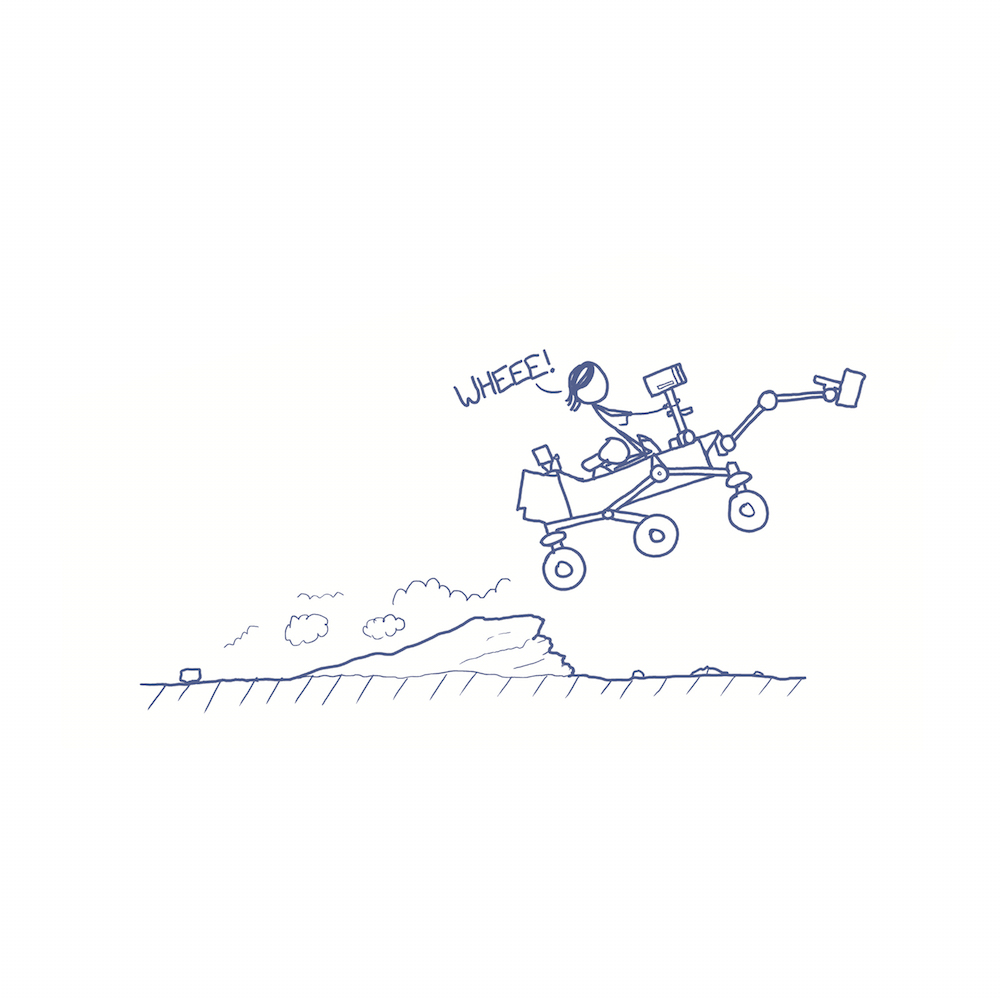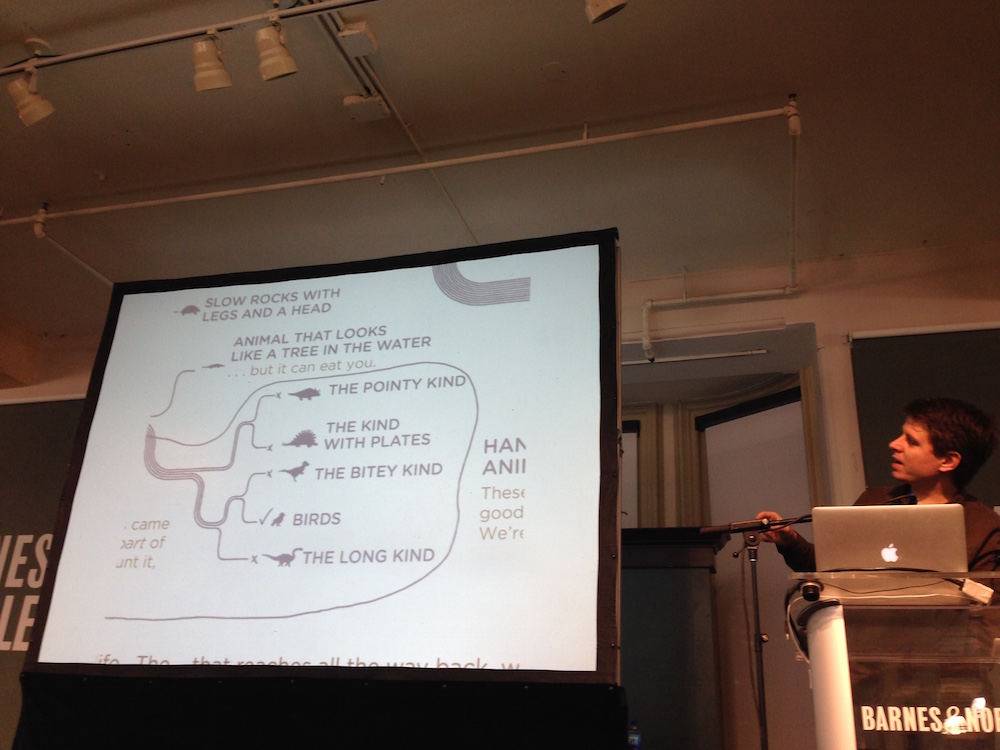Stick-Figure Science: Cartoonist Makes Complicated Stuff Simple

Randall Munroe once designed robots at NASA, and now he's undertaken a comparably tough task: describing the science of complex "stuff" such as elevators, the Mars Curiosity rover and nuclear reactors using only the 1,000 most commonly used words in the English language.
Granted, Munroe's new book "Thing Explainer: Complicated Stuff in Simple Words"(Houghton Mifflin Harcourt, 2015) contains diagrams of the things he's explaining, such as "boxes that make clothes smell better" (washing machines and dryers) and a "hole-making city boat" (oil rig), that help readers understand each concept. To top it off, the cartoonist also includes a few of the stick figures that made him famous after he started the cerebral and geeky "xkcd" Web comic in 2005.
Munroe, a self-proclaimed nerd, said he wrote the book to encourage people to learn about science even if they haven't mastered the nitty-gritty, often esoteric, vocabulary. [Easy Answers to the Top 5 Science Questions Kids Ask]
In fact, the book is for nerds of all ages, even those with professional backgrounds. Munroe studied math and physics in college, but constantly worried that people would think he was stupid if he didn't always use the correct technical term, he said at a reading in New York City on Tuesday (Nov. 24), the day of his book's release.

For instance, the Earth is round, but any physicist will call it an oblate spheroid.
"And then, actually, it's not an oblate spheroid. It's a more complicated shape, which can be described only by this long string of numbers," Munroe said.
Obviously, it's important for NASA engineers to understand Earth's shape, but there's no need to call it anything but a sphere during a casual exchange with friends, Munroe said. When writing the book, he moved beyond his concern over the correct terms, and instead focused on how he could explain complex ideas with commonly used words.
Sign up for the Live Science daily newsletter now
Get the world’s most fascinating discoveries delivered straight to your inbox.
"I had to let go of that fear of sounding stupid," Munroe said. "Because [when] you can't say airplane, you have to say 'sky boat,' [and] everything you say is going to sound stupid."
He also had to swap some key terminology. The word "mass" (the amount of material within an object) wasn't on the top 1,000 word lists, so he used weight (a measurement of gravity's pull on an object) instead.

"And the thing is, I know it's mass," Munroe said. "But weight is pretty clear. It makes sense to people. So it was this really freeing feeling" to use common words.
However, if people do decide to dive into a scientific discipline, "Thing Explainer" will only get them so far, Munroe said. Once they understand the big picture, students will have to invest time to learn the lingo so they can read scientific studies, ask questions and create their own research in a particular field, he said.
Until then, he said people are invited to read about "tiny bags of water you're made of" (animal cells) and the "big, flat rocks we live on" (plate tectonics). Readers can also check out the giant tree of life, which includes the different types of dinosaurs (the pointy kind, the kind with plates, the bitey kind, birds and the long kind) and little-known creatures such as the linsang, or the "almost cat," which "looks like a cat with a long neck. It's the closet thing to a cat that's not actually in the cat family," the book states.
After a fan asked about the "almost cat" during the reading, Munroe gushed about the animal, confirming his love of science.
"It looks almost like a cat, which is a little bit wrong," he said. "It's sort of strangely long and snakelike, and I found a video of one of these running around. I felt like it was like watching a cat video from a parallel universe."
People can write their own descriptions of the linsang, or their own favorite scientific subjects, using only the most common 1,000 words at xkcd.com/simplewriter, Munroe said.
Follow Laura Geggel on Twitter @LauraGeggel. Follow Live Science @livescience, Facebook & Google+. Original article on Live Science.

Laura is the archaeology and Life's Little Mysteries editor at Live Science. She also reports on general science, including paleontology. Her work has appeared in The New York Times, Scholastic, Popular Science and Spectrum, a site on autism research. She has won multiple awards from the Society of Professional Journalists and the Washington Newspaper Publishers Association for her reporting at a weekly newspaper near Seattle. Laura holds a bachelor's degree in English literature and psychology from Washington University in St. Louis and a master's degree in science writing from NYU.










